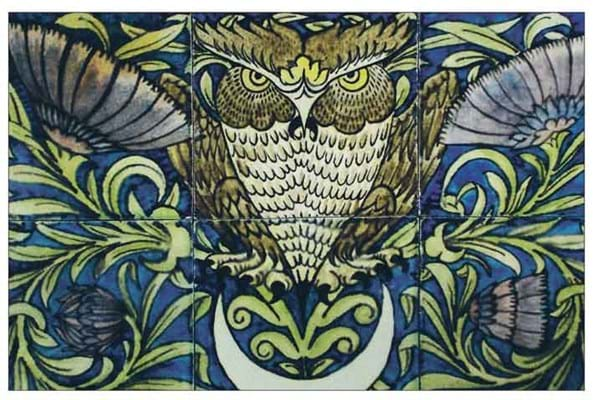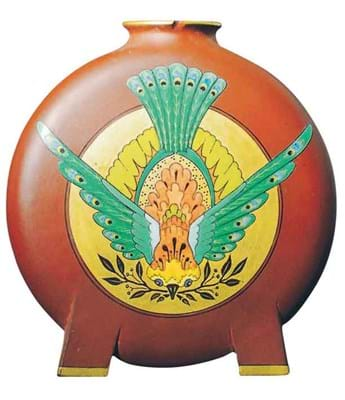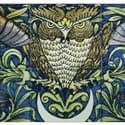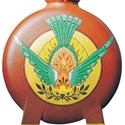William De Morgan featured strongly in the December 5 auction in which 46 lots of the great man's work were included among the 162 lots of late 19th and early 20th century ceramics.
The star of the offering was an 18 x 12in (46 x 30cm) framed six-tile panel from his Merton Abbey period (1882-1888). Rare but well documented, it was painted with an owl on carnation stems over a crescent moon, against a deep blue ground, and was one of only three known versions of this design.
One, donated by retired dealer Alan Green, is in the Birmingham City Museum, while the other, which has a blue crescent moon, is in a private London collection.
However, two original designs are in the De Morgan archive at the V&A and are illustrated in Martin Greenwood's The Designs of William de Morgan (Richard Dennis Publications, 1989).
The panel had remained unsold at vendor Richard Dennis's show at his Kensington Church Street Gallery in 2004 when it had a price tag of £15,000.
Woolley & Wallis's 20th century decorative arts specialist Michael Jeffrey was conscious that De Morgan tile fans had already been treated to the second part of the dispersal of Peter Creffield's mammoth collection at Bonhams in London, on September 26.
Accordingly he gave the panel a broad £10,000-15,000 estimate.
When it sold to an anonymous buyer at £11,000, Mr Dennis said he was "delighted" that the William De Morgan market had been upheld, since the buyer's premium took the final price to £13,261.
Christopher Dresser
Meanwhile, Woolley & Wallis' 585-lot sale on November 21 sale was led by a terracotta Minton cloisonné ware moonflask vase designed by Christopher Dresser.
Date coded 1867, the 6in (15.5cm) high vase showing a stylised peacock holding an olive branch, was consigned to Salisbury by a London collector, and was something of an unknown quantity in terms of auction precedent.
The only other surviving example of this short-lived pattern (replaced by the better known stylised butterfly design) has a turquoise rather than a yellow ground and is in a large private London collection.
However, the design is well documented, surviving in the Doulton Minton Archive in Stoke-on-Trent and illustrated in Widar Halen's Christopher Dresser (Phaidon, 1994, pl.128).
It was a design in which Dresser fully embraced the influence of flattened Japanese cloisonné pilgrim bottles which he saw at the International Exhibition of 1862 - the show which impressed so many British designers.
A few minor rim chips were reflected in the £1000-1500 estimate at Salisbury but they were of little consequence for such a rare piece.
Considerable pre-sale interest from the UK and America meant bidding started at £4000 and it quickly sold to an anonymous British buyer at £5000.
The buyer's premium was 17.5%.








